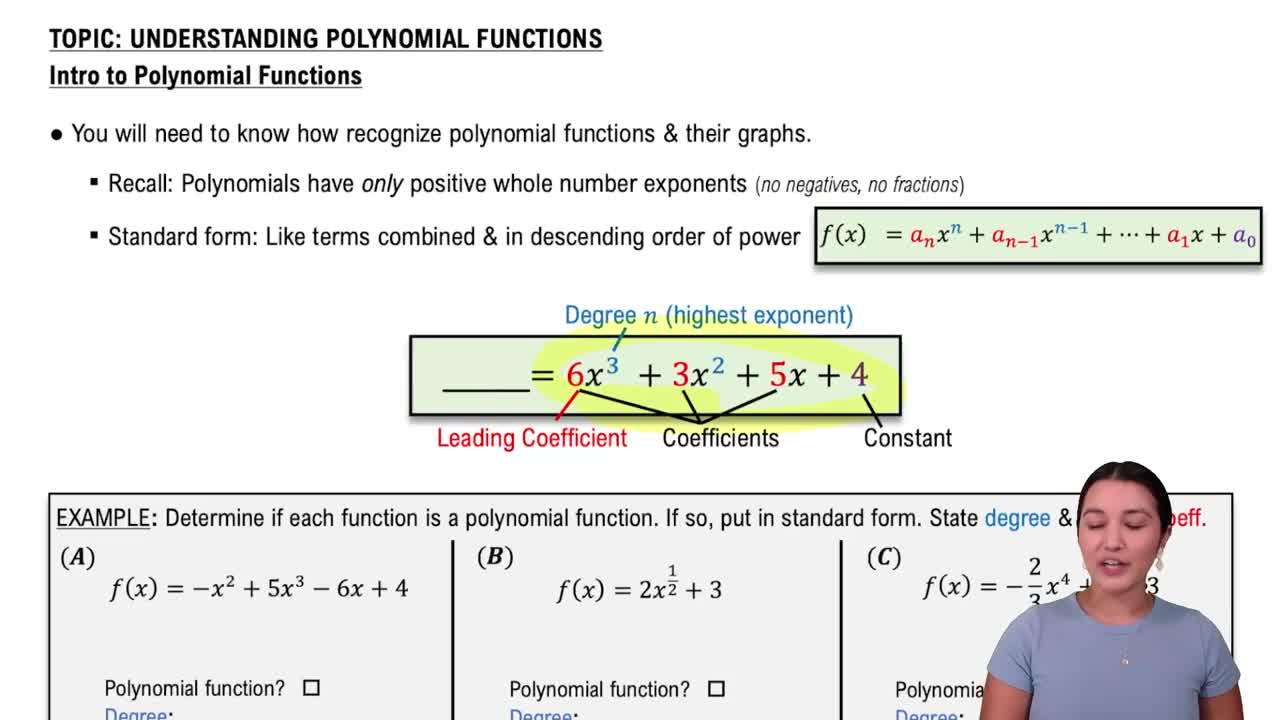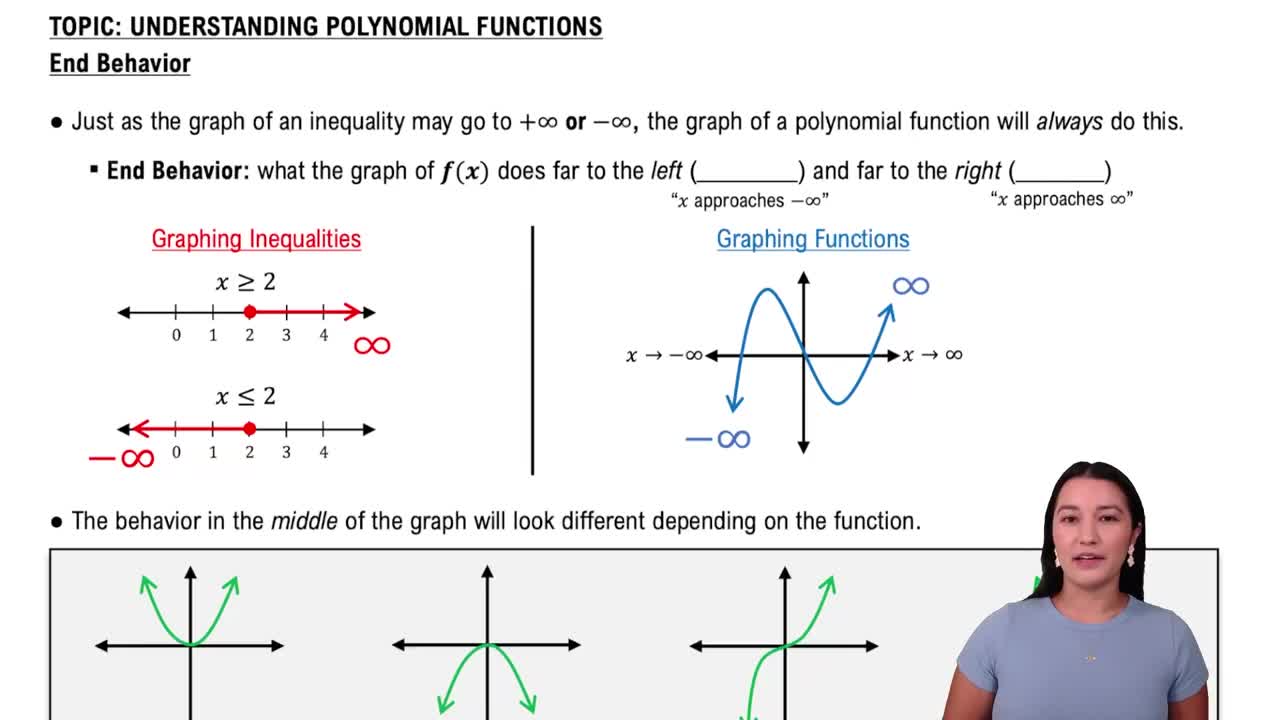Table of contents
- 0. Review of Algebra4h 16m
- 1. Equations & Inequalities3h 18m
- 2. Graphs of Equations43m
- 3. Functions2h 17m
- 4. Polynomial Functions1h 44m
- 5. Rational Functions1h 23m
- 6. Exponential & Logarithmic Functions2h 28m
- 7. Systems of Equations & Matrices4h 6m
- 8. Conic Sections2h 23m
- 9. Sequences, Series, & Induction1h 19m
- 10. Combinatorics & Probability1h 45m
4. Polynomial Functions
Understanding Polynomial Functions
Problem 96a
Textbook Question
The following exercises are geometric in nature and lead to polynomial models. Solve each problem. A standard piece of notebook paper measuring 8.5 in. by 11 in. is to be made into a box with an open top by cutting equal-size squares from each cor-ner and folding up the sides. Let x represent the length of a side of each such square in inches. Use the table feature of a graphing calculator to do the following. Round to the nearest hundredth. Determine when the volume of the box will be greater than 40 in.^3.
 Verified step by step guidance
Verified step by step guidance1
<Step 1: Define the volume function. The volume V of the box can be expressed as a function of x, where x is the side length of the square cut from each corner. The dimensions of the box will be (8.5 - 2x) by (11 - 2x) by x. Therefore, the volume function is V(x) = x(8.5 - 2x)(11 - 2x).>
<Step 2: Set up the inequality. We want to find the values of x for which the volume is greater than 40 cubic inches. This means we need to solve the inequality V(x) > 40, or x(8.5 - 2x)(11 - 2x) > 40.>
<Step 3: Use a graphing calculator. Enter the volume function V(x) = x(8.5 - 2x)(11 - 2x) into the graphing calculator. Use the table feature to find values of x that make V(x) greater than 40.>
<Step 4: Analyze the table. Look for the range of x values in the table where the volume is greater than 40. Pay attention to the intervals and note the smallest and largest x values that satisfy the inequality.>
<Step 5: Round the results. Once you have identified the range of x values, round these values to the nearest hundredth to find the precise range of x for which the volume of the box is greater than 40 cubic inches.>
Recommended similar problem, with video answer:
 Verified Solution
Verified SolutionThis video solution was recommended by our tutors as helpful for the problem above
Video duration:
2mPlay a video:
Was this helpful?
Key Concepts
Here are the essential concepts you must grasp in order to answer the question correctly.
Volume of a Box
The volume of a box is calculated using the formula V = length × width × height. In this scenario, the box is formed by cutting squares from the corners of a rectangular sheet, which affects its dimensions. The new dimensions after cutting squares of side length x will be (8.5 - 2x) for the length, (11 - 2x) for the width, and x for the height. Understanding how these dimensions interact is crucial for determining the volume.
Recommended video:

Asymptotes of Hyperbolas
Inequalities
Inequalities are mathematical expressions that show the relationship between two values, indicating that one is greater than, less than, or equal to the other. In this problem, we need to set up an inequality to find when the volume of the box exceeds 40 in³. This involves solving the inequality V > 40, which will help identify the permissible values of x that satisfy this condition.
Recommended video:

Linear Inequalities
Graphing Calculators and Tables
Graphing calculators are powerful tools that can visualize mathematical functions and inequalities. By using the table feature, one can input the volume function derived from the box's dimensions and observe the corresponding values of x. This allows for a systematic approach to find when the volume exceeds 40 in³, as it provides a clear view of how the volume changes with different values of x.
Recommended video:

Transformations of Exponential Graphs

 6:04m
6:04mWatch next
Master Introduction to Polynomial Functions with a bite sized video explanation from Callie
Start learningRelated Videos
Related Practice



















